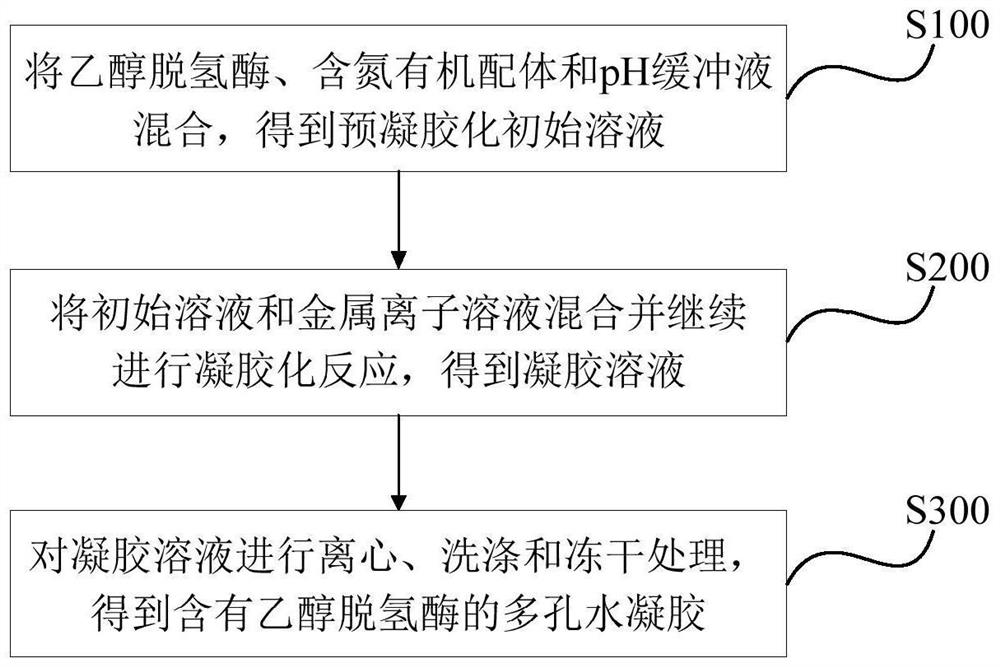Method for forming supramolecular hydrogel for biological catalysis by utilizing enzyme self-assembly
A self-assembly method and porous hydrogel technology, applied in biochemical equipment and methods, biofuels, enzymes, etc., can solve problems such as poor stability and easy falling off, large mass transfer resistance, small immobilization amount, etc., and achieve immobilization steps Simple, good organic solvent tolerance, enzyme activity and stability improvement effect
- Summary
- Abstract
- Description
- Claims
- Application Information
AI Technical Summary
Problems solved by technology
Method used
Image
Examples
Embodiment 1
[0049] Example general method:
[0050] 1. Add alcohol dehydrogenase (ADH) and nitrogen-containing organic ligands to a beaker with a mass ratio of 1:50. 9 mL of phosphate buffer was added to bring the enzyme concentration to 0.6 mg / mL. The temperature is controlled at 25°C. Stir for 10 minutes.
[0051] 2. After stirring, add 1 mL of a metal ion solution (the metal ion is copper ion or cobalt ion or magnesium ion or calcium ion) into the beaker, and the concentration of the metal ion in the metal ion solution is 13 mg / mL. The temperature is controlled at 25°C. Stirring was continued for 2 h.
[0052] 3. The solution is collected, centrifuged and washed three times, and then freeze-dried to obtain a porous hydrogel product.
[0053] 4. Take the synthetic hydrogel catalyzing reaction containing 0.5mg enzyme, the reaction solution includes phosphate buffer, the reaction substrate is acetophenone, the concentration of acetophenone is 5mmol / L, and the concentration of coenzym...
PUM
| Property | Measurement | Unit |
|---|---|---|
| concentration | aaaaa | aaaaa |
| optical purity | aaaaa | aaaaa |
| optical purity | aaaaa | aaaaa |
Abstract
Description
Claims
Application Information
 Login to View More
Login to View More - R&D
- Intellectual Property
- Life Sciences
- Materials
- Tech Scout
- Unparalleled Data Quality
- Higher Quality Content
- 60% Fewer Hallucinations
Browse by: Latest US Patents, China's latest patents, Technical Efficacy Thesaurus, Application Domain, Technology Topic, Popular Technical Reports.
© 2025 PatSnap. All rights reserved.Legal|Privacy policy|Modern Slavery Act Transparency Statement|Sitemap|About US| Contact US: help@patsnap.com



